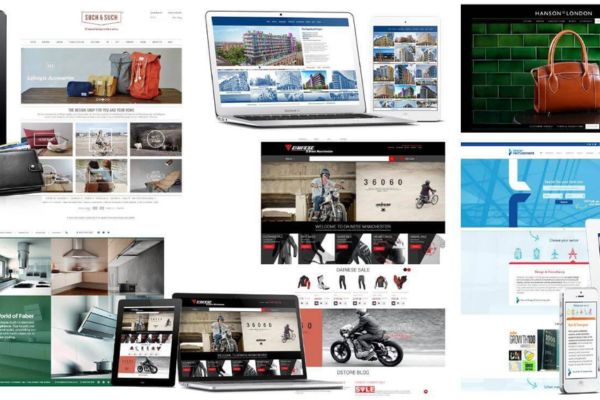Creating an effective online presence is crucial for businesses in today’s digital landscape, especially in a competitive market like Columbia, Maryland. Web design plays a pivotal role in how businesses communicate their brand and engage with customers. This article explores the nuances of web design in Columbia, MD, providing insights into best practices, local agencies, and essential elements for a successful website.
Web Design Columbia Maryland
Web design encompasses more than just aesthetics; it is about creating an intuitive user experience that encourages visitors to engage with your content. A well-designed website can enhance your brand’s credibility, improve user engagement, and ultimately drive conversions. In Columbia, MD, where local businesses thrive, having a professional web presence is not just beneficial—it’s essential.
Key Elements of Effective Web Design
- User Experience (UX): The primary goal of web design should be to create a seamless experience for users. This includes easy navigation, fast loading times, and mobile responsiveness.
- Visual Appeal: A visually attractive website captures attention. This includes using appropriate color schemes, typography, and imagery that align with your brand identity.
- Content Strategy: Quality content that is engaging and informative is vital. It should address the needs and interests of your target audience while being optimized for search engines.
- SEO Optimization: Search engine optimization (SEO) ensures that your website ranks well in search results, making it easier for potential customers to find you online.
Local Web Design Agencies in Columbia
Columbia boasts a variety of web design agencies that cater to different business needs. Here are some notable ones:
1. Apollo Marketing
Located in Columbia, Apollo Marketing specializes in creating engaging websites tailored to client specifications. They focus on understanding the unique requirements of each business and translating them into effective web solutions. Their services include SEO, PPC marketing, and social media management.
2. SCDIT
SCDIT offers affordable web design services along with SEO strategies that enhance online visibility. Their approach includes domain registration and hosting services, ensuring that clients have a comprehensive solution for their web presence. They also emphasize the importance of responsive design across devices.
3. Dreamscape Marketing
With a strong reputation in Maryland, Dreamscape Marketing provides a range of digital services including web development and SEO. Their team focuses on delivering high-quality designs that cater to various industries. They are known for their commitment to customer satisfaction and effective digital strategies.
4. Greenflag Media
A newer player in the market, Greenflag Media has quickly gained a reputation for its branding and digital strategy services. They offer tailored web design solutions that help businesses establish a strong online identity. Their focus on customer service and quality has earned them high ratings from clients.
Trends in Web Design
Staying updated with current trends is essential for any business looking to enhance its online presence. In Washington, D.C., where competition is fierce, understanding the latest web design trends can make a significant difference in how businesses engage with their audience. Here are some key trends shaping web design in the District of Columbia:
a. Minimalism
Minimalist design is a prominent trend that focuses on simplicity and clarity. This approach emphasizes essential elements while eliminating unnecessary clutter, creating a clean and user-friendly interface. By prioritizing whitespace and straightforward navigation, minimalist designs enhance user experience significantly. This trend not only improves load times but also allows users to focus on the content that matters most. In a city like D.C., where information overload is common, a minimalist approach can help businesses communicate their messages more effectively, making it easier for visitors to find what they need without distractions.
b. Responsive Design
With an increasing number of users accessing websites via mobile devices, responsive design has become critical. Websites must adapt seamlessly to various screen sizes to provide an optimal viewing experience, whether users are on smartphones, tablets, or desktops. Responsive design ensures that all elements of a website—images, text, and navigation—resize appropriately, maintaining usability across devices. This trend is particularly important in urban environments like Washington, D.C., where people are often on the go. A responsive site can significantly reduce bounce rates and enhance user satisfaction, ultimately leading to better engagement and conversions.
c. Interactive Elements
Incorporating interactive elements such as animations, quizzes, and interactive infographics can engage users more effectively. These features encourage visitors to spend more time on your site, making their experience more enjoyable and memorable. For instance, a well-placed animation can guide users through a process or highlight important information without overwhelming them. Quizzes and polls can also serve as tools for gathering user data while providing entertainment. In a city known for its political engagement and activism, interactive elements can foster a sense of community and involvement, making users feel more connected to the brand.
d. Personalization
Personalization is another key trend that enhances user engagement. Tailoring content based on user preferences and behavior can significantly improve the user experience. For example, websites that remember user preferences, suggest products based on past behavior or offer personalized content can create a more meaningful connection with visitors. This tailored approach can lead to higher conversion rates, as users are more likely to engage with content that resonates with them. In Washington, D.C., where diverse audiences have varied interests, personalization allows businesses to cater to specific demographics, making their marketing efforts more effective.
e. Dark Mode
Another emerging trend in web design is the option for dark mode. This feature is becoming increasingly popular among users who prefer a darker interface, especially in low-light environments. Dark mode can reduce eye strain and improve battery life on mobile devices, making it a favorable option for many users. Implementing a toggle for dark mode can enhance user experience and demonstrate a brand’s commitment to user comfort and modern design practices.
The Web Design Process
Understanding the typical workflow of a web design project can help businesses set realistic expectations. Here’s a breakdown of the process:
- Initial Consultation: Agencies often begin with a meeting to understand the client’s needs, goals, and target audience.
- Research & Planning: This phase involves researching competitors and defining the project scope.
- Design Phase: Designers create wireframes and mockups based on initial sketches.
- Development: The actual coding takes place during this stage where developers build the website.
- Testing: Before launch, thorough testing ensures functionality across different devices and browsers.
- Launch: The final product goes live after all checks are complete.
- Maintenance: Ongoing support is crucial for updates and troubleshooting post-launch.
Cost Considerations
The cost of web design can vary significantly based on factors such as complexity, features required, and agency reputation. In Columbia, businesses can expect prices ranging from:
- Basic Websites: $1,000 – $5,000
- E-commerce Sites: $5,000 – $20,000
- Custom Solutions: $20,000+
Understanding these costs helps businesses budget effectively while ensuring they receive quality services tailored to their needs.
Common Mistakes to Avoid
When embarking on a web design project, certain pitfalls should be avoided:
- Neglecting Mobile Users: Failing to optimize for mobile can alienate a significant portion of potential customers.
- Ignoring SEO: A beautiful website is useless if it cannot be found by search engines.
- Overcomplicating Navigation: Complex navigation can frustrate users; simplicity is key.
- Lack of Clear Calls-to-Action (CTAs): Without clear CTAs, users may not know how to proceed or engage further with your site.
Conclusion
Web Design Columbia Maryland, goes beyond creating visually appealing websites; it focuses on crafting an online experience that resonates with users and drives business success. Understanding the importance of user experience is crucial, as it significantly influences how visitors interact with a site. Staying updated with current design trends ensures that businesses remain relevant and engaging in a competitive landscape.
Choosing the right local agency is vital for achieving a tailored approach that aligns with specific business needs. Collaborating with professionals who understand the local market can lead to more effective strategies. Additionally, avoiding common mistakes—such as cluttered layouts or poor navigation—can enhance user satisfaction and retention.
Investing in professional web design services not only elevates your brand image but also contributes significantly to achieving business goals in the digital realm. Whether you’re starting from scratch or looking to revamp an existing site, Columbia offers ample resources and expertise to help you succeed online. By prioritizing user-centric design and leveraging local talent, businesses can establish a strong online presence that stands out in today’s digital marketplace.


